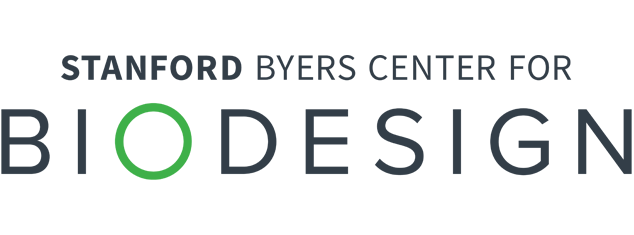Stories
Biodesign Innovators Clear a Path to Market
 Lily Truong shows off an early prototype of Clear Ear’s device with co-founder Vandana Jain.
Lily Truong shows off an early prototype of Clear Ear’s device with co-founder Vandana Jain.
Earwax can be a sticky, icky nuisance. But this naturally occurring substance plays an important role in protecting and lubricating the ear canal. Although this portion of the ear is generally self-cleaning, sometimes earwax builds up, dulling hearing and causing earache, itching, discharge, a feeling that the ear is plugged, or even ringing in the ear. Traditionally when this happens, the only reliable solution is to visit a specialist (usually an otolaryngologist or ENT) to have the excess wax professionally removed.
Recognizing that this is an expensive, inconvenient solution to one of the ear’s most common problems, two students from the Biodesign Innovation course, Lily Truong, a Master’s student in mechanical engineering, and Vandana Jain, a physician and MBA student, teamed up to understand and address the underlying need and develop a better solution. Their preliminary research and stakeholder interviews confirmed that they could potentially create significant value by developing a device that was safe, effective, and simple enough to be used by general practitioner rather than a specialist. “By moving this procedure downstream to the primary care environment, we hoped to reduce costs and improve access,” said Truong.
The two innovators, who eventually established a company called Clear Ear, developed a series of different prototypes based on what they were learning about the space. Once they had a reasonably well-developed concept and had been tested in multiple patients, they began talking with potential funders about supporting further research and development. This process underscored some challenges that the team had discovered through their own research. As Jain explained, “Funders are looking at the risks of investing in your product, and how much you have mitigated those risks. For our team, the most significant concern involved market risk – was there actually a need for the product, how big was the potential market, and how would we bring the product to the market.” Truong and Jain had been able to substantiate the need through surveys across multiple care environments. And they had been able to confirm that their target patient population of people who need ear cleaning was large and growing. This left them with one critical risk: how to reach this growing market through the primary care physician channel.
This proved to be a significant hurdle. “Our challenge was that we were trying to bring an ENT standard of care into the lower cost, primary care setting,” commented Truong. “This is a cost-sensitive market, so we needed to make a low-cost device. While lower cost improves access to care, it is also a business challenge because it requires a high volume of sales to achieve profitability. This made our business case less appealing to investors.” A related issue was distribution. “Primary care physicians are a fragmented market,” Truong continued. “We knew we would have to rely on indirect sales channels because the price of the device wouldn’t support a direct sales force. So it was a big distribution challenge to get the product into the hands of primary care doctors.”
 Truong with the Clear Ear product line in 2016.
Truong with the Clear Ear product line in 2016.
Ultimately, the innovators decided to make a significant pivot. “Ironically, earwax build-up is most often caused by people attempting to remove earwax with cotton swabs or other implements that actually push the wax into the inner ear canal,” said Jain. “So we decided to help prevent the problem from occurring in the first place, by designing an ear cleaning device for consumers.” Fortunately, the team’s initial focus on developing solution that was safe, effective, and simple enough to be used by a general practitioner, instead of a specialist, paved the way for a relatively smooth transition to a consumer orientation. “We discovered that our device was so safe, effective, and easy to use that we just had to take it one step further to put it into the hands of consumers,” Truong recalled. “By further moving this procedure further downstream into the home care environment, we could improve access on a much larger scale,” she added. Rather than tackling the huge distribution challenges associated with selling into the fragmented primary care market, Clear Ear established a direct distribution channel to their patient population on the company’s website. Through this online channel, the team was able to demonstrate that the economics for manufacturing, selling, and distributing the product to customers made sense and could support the growth of the business on a long-term basis.
Clear Ear named its first consumer medical device the OTO-TIP. Similar to a small electric toothbrush, the head of the device is a tiny, furrowed brush tip that revolves to pull wax and debris away from the lining of the ear canal without the user having to scoop or push. A protective cap between the revolving tip and the hand-piece prevents insertion of the device beyond the safe outer ear canal. The product, which has earned numerous physician and consumer endorsements and won multiple innovation awards, is currently available through www.clearearinc.com and Amazon, and has been sold in 11 countries to date. Clear Ear has plans to expand into brick and mortar retail outlets in the near future, and has a portfolio of related products in development. Reflecting on her experience so far, Truong said, “The biodesign innovation process is the instrumental guide that we’ve followed throughout our entire journey as innovators. We’re forever grateful to have been equipped with those guiding principles during our time at Biodesign.”
